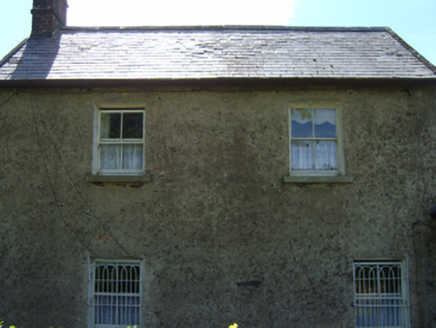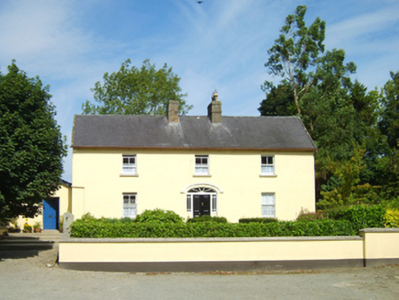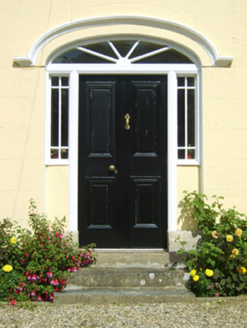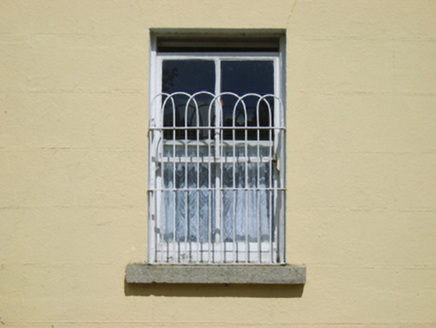Survey Data
Reg No
15701924
Rating
Regional
Categories of Special Interest
Architectural, Artistic, Historical, Social
Original Use
Farm house
In Use As
Farm house
Date
1890 - 1895
Coordinates
293561, 143316
Date Recorded
07/08/2003
Date Updated
--/--/--
Description
Detached three-bay two-storey part double-pile farmhouse, dated 1892, on an L-shaped plan. Occupied, 1901; 1911. Pitched part double-pile (M-profile) slate roof with clay ridge tiles, paired rendered red brick Running bond central chimney stacks having stringcourses below stepped capping supporting terracotta or yellow terracotta tapered pots, lichen-spotted concrete or rendered coping to gables, and replacement uPVC rainwater goods on rendered eaves. Rendered, ruled and lined walls; lime rendered or roughcast surface finish to rear (east) elevation. Hipped segmental-headed central door opening in segmental-headed recess approached by flight of three lichen-spotted steps with carved timber mullions supporting carved timber transom, and concealed dressings with hood moulding framing timber panelled double doors having sidelights below fanlight. Square-headed window openings with cut-granite sills, and concealed red brick block-and-start surrounds framing two-over-two timber sash windows behind looped wrought iron railings. Interior including (ground floor): central hall retaining timber surrounds to door openings framing timber panelled doors; and timber surrounds to door openings to remainder framing timber panelled doors with timber panelled shutters to window openings. Set in landscaped grounds with rendered piers to perimeter having pyramidal capping supporting wrought iron double gates.
Appraisal
A farmhouse representing an integral component of the late nineteenth-century domestic built heritage of County Wexford with the architectural value of the composition suggested by such attributes as the compact plan form centred on a restrained doorcase not only demonstrating good quality workmanship, but also showing a simple radial fanlight; and the somewhat disproportionate bias of solid to void in the massing compounded by the diminishing in scale of the openings on each floor producing a graduated visual impression. Having been well maintained, the elementary form and massing survive intact together with substantial quantities of the original fabric, both to the exterior and to the interior, thus upholding the character or integrity of the composition. Furthermore, adjacent outbuildings (extant 1904) continue to contribute positively to the group and setting values of a self-contained ensemble having historic connections with the Nolan family including Charles Nolan (----), 'Farmer' (NA 1901); and Thomas Nolan (1873-1945), 'Farmer' (NA 1911).







